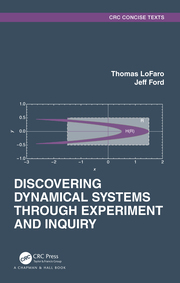
As the name suggests, the IBL Dynamics Blog is dedicated to discussing dynamical systems and inquiry-based learning. We created this blog as a companion to the CRC Press textbook Discovering Dynamical Systems Through Experiment and Inquiry and its companion website ibldynamics.com authored by Tom LoFaro and Jeff Ford.
We hope to use this blog to foster discussion on our approach to inquiry-based learning, to answer common questions about our text and website, and finally to discuss interesting dynamical systems questions and answers.
I think a good place to open this discussion is to briefly discuss the motivation and genesis of this project. I have been studying and teaching dynamics for going on 30 years now, first as a graduate student at Boston University and now as a faculty member at Gustavus Adolphus College. Throughout that time, I used a variety of computer visualization tools to illustrate fundamental concepts and cool facts of dynamical systems to students. Many of these tools I developed myself and in 30 years had quite an extensive library of them.
More recently, when my co-author Jeff Ford joined the Gustavus faculty, I began to learn about inquiry-based learning and first used that method to teach a Complex Variables course. It took me a while to get used to not lecturing! But as that anxiety faded, I began to see the student-learning benefits of this method of teaching and developed personal strategies for dealing with the awkward silences that sometimes arise (especially at the start of the term).
From these experiences, I began to think about how one could blend interactive computer visualization exercises that give students a feel for dynamics with inquiry-based learning that is most powerful when guiding students through proofs of mathematical truths. And after much contemplation, I began to realize that the way to go about doing this was to
- use the simulations and experiments to introduce a topic,
- encourage students to conjecture and formalize mathematical statements,
- apply these theorems and concepts to other dynamical systems, and
- use an inquiry-based learning structure to guide them through the proofs.
And so during a sabbatical, I began to draft Mathematica notebooks to do just this. And developed the not-so-clever acronym ECAP to describe this learning method. The textbook and the website were the ultimate fruits of this work.
We encourage you to take a look and let us know what you think. And we will keep posting here to give you our thoughts, suggestions, and undoubtedly corrections.
TLo